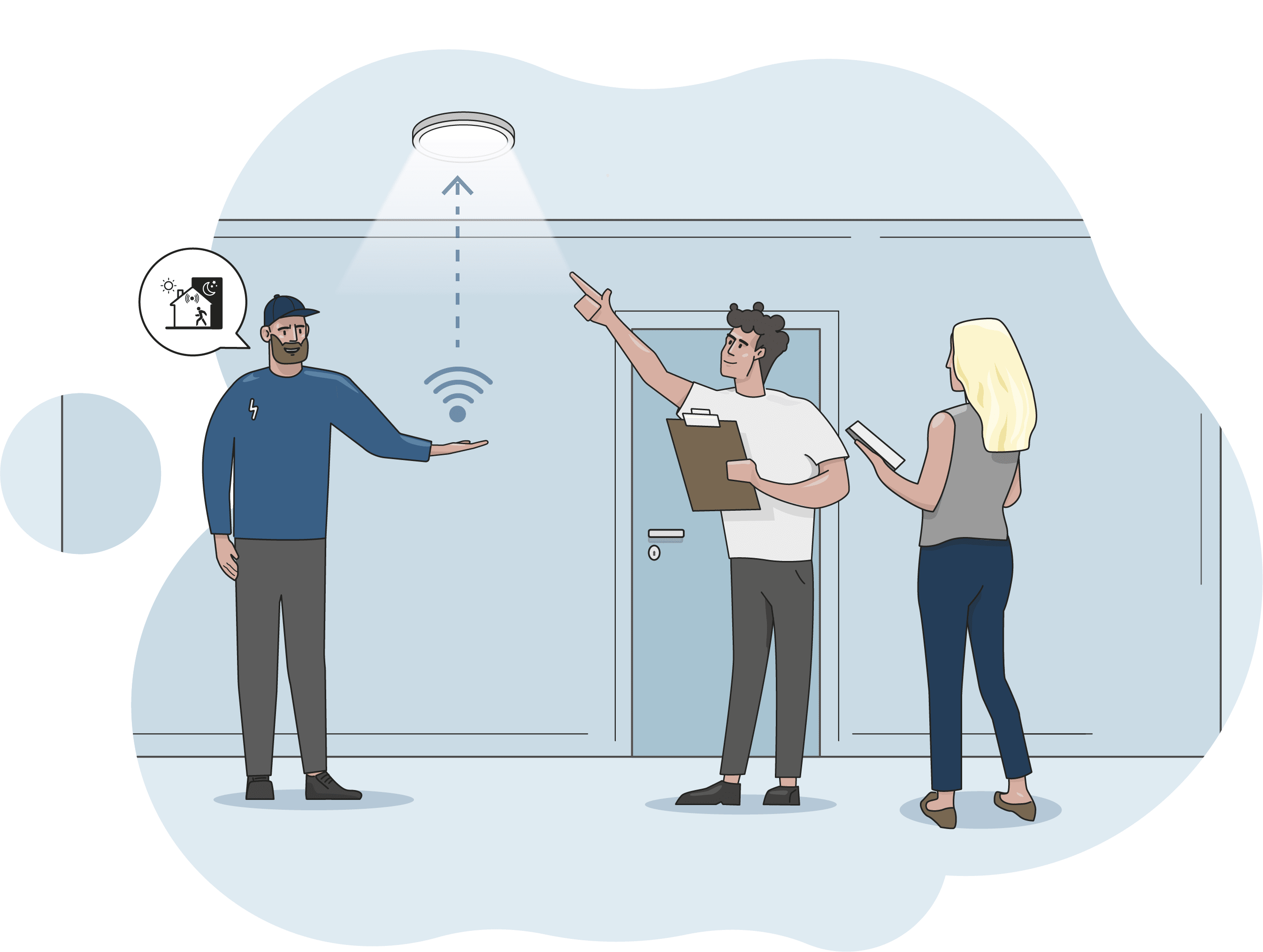4 STEPS TO SUCCEED
WITH SENSOR LIGHTING
1
Set the sensor
Set the sensor according to the environment. Read the user manual carefully before you start.
2
Test sensors
Test and adjust the settings until you have the desired result. You must do this before assembling the entire project.
3
Assemble the entire project
Complete the installation when you are satisfied with the setting of the sensor.
4
Full review
Take the end user on a full walk-through and show how the sensor works.
General information
Microwave sensors are often used in larger rooms and rooms where early detection is required. In this case, the light should be switched on almost before you enter the room. It is important to remember that the detection range of a microwave sensor does not consider walls, doors or other obstacles. If you then install a microwave sensor luminaire that has a larger detection area than the room it is installed in, the light will switch on when there is movement outside the room. Sometimes microwave sensor luminaires are also mounted on a wall (e.g. a storage room or other due to low ceilings). In this case, the detection area can be even larger because the microwave sensor detects through several walls. Moving objects, fans and equipment that ”make noise” can also, in some cases, harm microwave sensors.
For smaller rooms, you can use a PIR detector (also used in larger rooms), which many feel is safer to use as it cannot detect through materials. Sensors have segments that can resemble ”pizza slices” If there is movement from one segment to another (one pizza slice to another), the sensor will detect it. In a narrow corridor, you may find that with some PIR luminaires you have to get very close to the luminaire before it detects. This is because you are in the same segment and do not break any of the lines until you are almost at the luminaire. The solution may be to turn the luminaire/sensor 4-5 degrees. The installer must carry out tests when installing all sensor luminaires. If many luminaires are to be installed, testing a small number of sensors is a good idea to ensure they will function as aspected before installing all the sensor luminaries.
It is essential to inform the end user how the sensor lamps work.
The microwave sensor emits an invisible signal of microwaves that reflects when encountering an object or person in the environment. The sensor detects movement by analysing changes in the reflected microwaves. This type of sensor detects movement through walls.
The PIR (Passive Infrared) sensor works by detecting heat radiation from humans. The sensor consists of a detector behind a lens that detects infrared radiation. This type of sensor does not see movement through walls and must therefore be visible in the luminaire.
A motion sensor can be based on either PIR or microwaves and detect movement in a room or area to switch on the light when it is in use.
A daylight sensor measures the amount of natural light in the environment. The sensor automatically adjusts the brightness of the luminaire according to the amount of available daylight. The sensor can completely dim or switch off the luminaire when there is sufficient natural light. This also allows the brightness to be adjusted when necessary, for example, on grey days or in the evening.





